Contents

100
WAYS Your Child Can Learn THROUGH PLAY ............... Fun Activities for Young Children with SEN Georgina Durrant ILLUSTRATED BY CHRISTOPHER BARNES

CONTENTS
PREFACE
W hether its raining and youre stuck inside, your child is overstimulated and needs some sensory play or youre off on a train journey and need ideas to keep your child engaged while sat still, this book is designed to give you one hundred ways to keep your child entertained. Whats more, Ive sneaked into each activity lots of skill-based learning, so while your child is happy playing or creating, you can sit there confident in the knowledge that they are also developing a whole array of skills through play. I also wanted this book to help you if youre feeling a bit overwhelmed with how best to develop certain skills with your child. Its all well and good being told by your childs school that they need to improve their motor skills, or communication skills, but how do you do this? Where do you start? What can you do at home or out and about with your child to develop these skills? At the bottom of each activity, youll find a handy skills box highlighting the skills that the activity can help your child develop. For example, if youre looking for some ways to improve their working memory, you can easily scan through the pages to find activities that have the working memory box ticked.
I hope that my book is used as a sort of play recipe book, which you can get down from the shelf, prop up on your kitchen table and look through with your child to decide what youre going to do today. As you would with recipes, Id also like you to experiment with it. If one of the activities doesnt quite suit your child, amend it, just like you would if theres an ingredient in a cake recipe that your child dislikes or you havent got in your cupboard. Ive added suggestions for ways you can extend and adapt each activity but feel empowered that you are the expert on your child, and you will know the best way to make these activities work for your family. It may be that your child has a visual impairment, for example, and the activity is to look for coloured objects, so you could choose to adapt it to find items of different textures instead. Or if your child has colour-blindness, for this activity you could choose the colours that they can differentiate between.
You may be wondering why all the activities are play based. Simply, its because Im a huge believer in the importance of play and, I would argue, so are children! In my experience as a teacher, special educational needs and disabilities coordinator (SENDCO), mum and author of The SEN Resources Blog, play is the most wonderful way to learn! In my opinion, children learn more when they are happy and having fun. Therefore, all the activities in this book have fun at the very centre of them, with lots of learning skills intertwined. In case youre wondering who I am and why Ive written this book, Im Georgina. Im a mum of two and a former teacher/SENDCO. I now run the popular website, The SEN Resources Blog, a site for parents and teachers of children with special educational needs (SEN).
It started off as just a way for me to share my ideas for activities and to recommend some resources. Its now become one of the most popular SEN websites in the UK. I decided to write this book because I wanted to share my ideas with even more families. I really hope after reading it that you feel more confident that your child is learning through play and that you will have fun together with these activities. Heres what you can expect in each chapter:
Chapter 1 In the Garden
Chapter 1 is all about ways your child can learn through play in the garden or an outside space. Ive witnessed how some children become a bit lost when playing outside.
They may love being outside, but without the structure of activities they quickly become overwhelmed and unsure what to do when left to their own devices. Thats where this chapter comes in handy. With this book in your hands youve now got almost 20 activities designed just for the garden/outside space. From digging for pretend dinosaurs to going on a barefoot sensory walk around the garden, youll have plenty of ways to keep them learning through play outside.
Chapter 2 On a Walk
Im sure I cant be the only one who, while on a walk, regularly hears from my kids comments like, My legs are tired, Im hungry, Its too far! This chapter is bursting with games, nature hunts and silly challenges to help make your walks even more fun and, I hope, distract your children from the length of the walk!
Chapter 3 Sitting Still
This chapter arms you with play-based learning activities for those tricky situations when your child needs to sit still for a period of time. I hope that if and when youre anxious about long journeys, or having to keep your child relatively still at a wedding, you can pop this book in your bag and whip it out, knowing that theres a whole chapters worth of activities to help you!
Chapter 4 Rainy Day Imaginative Play
This is a collection of different role-play and small-world play activities that you can play together to develop key skills.
I appreciate that imaginative play can be difficult for some children, with it often being seen as open-ended play, so Ive tried some structure to it to make it more accessible. Ive often found that imaginative play activities can be fantastic for developing social skills, role-playing life skills and developing language and communication skills. These activities are not just about developing verbal communication if your child uses sign language or visuals to communicate, use these activities to help them practise these.
Chapter 5 Crafts
Crafts are absolutely fantastic for developing a whole range of skills but like Marmite, children either love them or hate them. Some children will happily sit making and creating while others might prefer to run around and resist the idea of doing a craft together. In my experience, some children dislike crafts because the activity is far too unstructured; they are sat with an array of craft materials and dont know where to begin, so switch off from the activity.
Another reason is that they think they arent very good at it. Therefore, these craft activities have lots of structure and purpose in them. They are short and snappy, with set instructions and achievable end goals.
Chapter 6 Sensory Play
Perhaps the most useful chapter in the whole book, this is full of sensory play activities. Sensory play stimulates a childs senses and for many children is a wonderful way to help them feel relaxed. If your child has had a busy day or has struggled with their emotions, you can flick to this chapter and try out a few of these activities to see if it helps them to regulate their emotions and find calm.
These can be particularly useful to do in the evening, helping your child to relax before attempting bedtime. Throughout the book, I refer to a collection of skills that the activities may help to develop. These are explained below: Language and communication The activities that tick this box will be the ones that help children to practise either verbal communication or communication through sign language or visuals. Literacy/Numeracy These are the activities in the book that develop your childs reading and writing or their maths skills. Concentration Any of the activities that require your child to focus for a period of time will help to develop this skill. Social skills These are the skills that are needed in social situations.

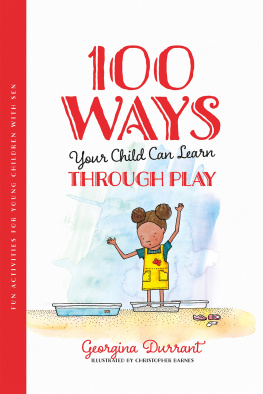

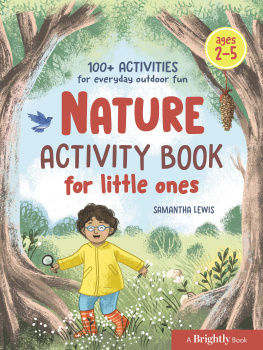
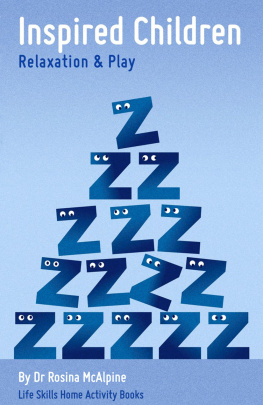
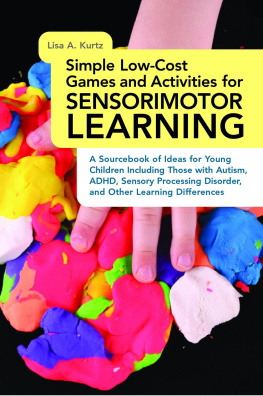
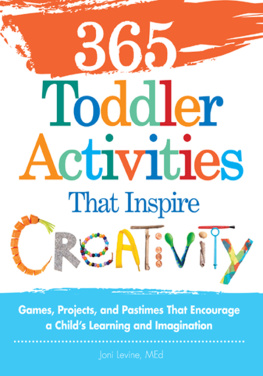

 100
100